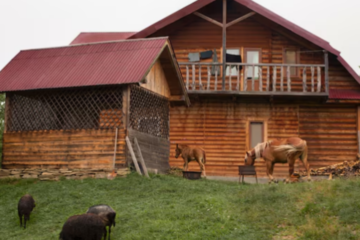Introduction for joke that sparks other jokes nyt nyt:
Humor is a fundamental aspect of human interaction, and it plays a crucial role in building connections among people. Among the vast array of jokes that exist, there is a unique category that stands out: the “joke that sparks other jokes nyt.” These are not just any jokes; they are the kind of humor that not only elicits immediate laughter but also inspires a chain reaction of additional jokes and comedic responses from those around. The New York Times (NYT) has long celebrated the art of humor, often showcasing jokes that lead to more jokes, highlighting the brilliance of wit and connection. In this extensive article, we will explore the characteristics of jokes that spark other jokes, delve into different types of humor, and share a variety of examples that will surely ignite a flurry of laughter.
Table of Contents
The Essence of a Great Joke
Understanding Humor
Before diving deep into the realm of the “joke that sparks other jokes nyt,” it is essential to grasp the essence of humor itself. At its core, humor refers to the quality of being amusing or entertaining. It often involves clever wordplay, cultural references, and relatable scenarios. The best jokes resonate with people, striking a chord that makes them laugh, think, and often, share their own related experiences.
Why Some Jokes Spark Others
What is it about certain jokes that enables them to spark additional humor? Here are some key characteristics that make a joke capable of igniting a comedic chain reaction:
- Open-Ended Nature: Jokes that leave room for interpretation or have punchlines that can be elaborated upon tend to inspire follow-up jokes. An example might be a humorous statement about a relatable situation that invites others to contribute their experiences or twist the joke in a new direction.
- Relatability: Jokes that touch on common experiences or emotions resonate deeply with audiences, leading to shared laughter and further jokes. When people find common ground in humor, they feel more inclined to contribute their own anecdotes or quips.
- Clever Wordplay: Puns and plays on words can be particularly effective in sparking additional jokes. A witty turn of phrase might inspire others to think of similar wordplay or create new puns based on the original joke.
- Cultural Context: Jokes that reference popular culture or current events can ignite discussions, leading to a series of jokes related to the topic at hand. The NYT often highlights such humor, making it relevant and engaging for its readers.
Types of Jokes That Spark Other Jokes
Having established what makes a great joke, let’s explore the various types of jokes that are particularly adept at sparking others.
1. One-Liners
One-liners are succinct, punchy jokes that deliver humor in a compact format. They are perfect for generating follow-up jokes because they provide ample room for expansion. Here’s an example:
- Original Joke: “I told my wife she was drawing her eyebrows too high. She looked surprised.”
- Follow-up Joke: “That’s one way to keep a guy on his toes! Now I’m just waiting for her to start drawing a mustache!”
One-liners are quick, memorable, and easy to build upon, making them a favorite in social settings.
2. Situational Jokes
Situational jokes draw from specific scenarios that many people can relate to. They often spark laughter because they resonate with shared experiences. For instance:
- Original Joke: “I went to buy some camo pants, but couldn’t find any.”
- Follow-up Joke: “Well, at least you didn’t look out of place while searching for them!”
These jokes tap into common life situations, encouraging others to join in with their own stories or variations.
3. Puns
Puns are a fantastic way to ignite additional jokes due to their clever wordplay. Here’s an example:
- Original Joke: “Why don’t skeletons fight each other? They don’t have the guts.”
- Follow-up Joke: “Maybe they just need a good scare to get them motivated!”
Puns invite creativity and playfulness, allowing others to jump in with their own spins on the original joke.
4. Observational Humor
Observational humor focuses on the quirks of everyday life, making it highly relatable. This type of humor often leads to more jokes being shared. For example:
- Original Joke: “Why do they call it rush hour when nothing moves?”
- Follow-up Joke: “Because that’s when all the slowpokes decide to take their sweet time!”
Observational humor creates a sense of camaraderie among audiences, as they all recognize the truth behind the joke.
5. Self-Deprecating Humor
Self-deprecating humor involves making fun of oneself and is often seen as relatable and endearing. It can encourage others to share their own similar experiences. For example:
- Original Joke: “I’m on a whiskey diet. I’ve lost three days already!”
- Follow-up Joke: “At least you’re on a ‘lose it’ plan instead of a ‘use it’ plan!”
This type of humor can disarm audiences, leading to laughter and more jokes being shared in a light-hearted manner.
Examples of Jokes That Spark Other Jokes from NYT

The New York Times has featured various humorists and comedians who have mastered the art of telling jokes that spark others. Here are some standout examples:
Example 1: The Classic Setup
- Joke: “I told my friend ten jokes to make him laugh. Sadly, no pun in ten did.”
- Follow-up: “But I bet one of them had him rolling on the floor, right? Or at least rolling his eyes!”
This classic setup sets the tone for a playful exchange of witty remarks.
Example 2: The Playful Twist
- Joke: “I’m reading a book on anti-gravity. It’s impossible to put down.”
- Follow-up: “You know what else is impossible? Getting my cat off the fridge!”
By weaving humor into relatable scenarios, the joke sparks further laughter and creativity.
Example 3: Relatable Situations
- Joke: “I used to play piano by ear, but now I use my hands.”
- Follow-up: “Good move! My dog is still trying to play fetch with the piano keys!”
These jokes build upon a shared understanding of everyday life, encouraging others to chime in with their own humorous observations.
Crafting Your Own Jokes
If you’re looking to create a “joke that sparks other jokes nyt,” here are some practical tips to consider:
- Know Your Audience: Tailor your humor to fit the people you’re sharing it with. Understanding what makes your friends or colleagues laugh can help you craft jokes that resonate with them.
- Keep It Simple: The best jokes are often straightforward and easy to understand. Avoid convoluted setups that may confuse your audience or detract from the humor.
- Be Relatable: Draw from personal experiences or universal truths that others can connect with. The more relatable your joke, the more likely it is to spark follow-up jokes.
- Encourage Participation: After telling a joke, invite your audience to share their own. This interaction can lead to a fun back-and-forth exchange of humor, creating a lively atmosphere.
- Practice Timing and Delivery: The way you deliver a joke can significantly impact its effectiveness. Practice your timing, tone, and body language to enhance the comedic effect.
- Embrace Playfulness: Allow yourself to be playful and spontaneous with your humor. Sometimes the best jokes come from unexpected moments, so be open to seizing those opportunities.
FAQs About Jokes That Spark Other Jokes
What is a “joke that sparks other jokes nyt”?
A “joke that sparks other jokes nyt” is a humorous remark that elicits laughter and encourages others to share their own jokes, leading to a chain of comedic exchanges.
Why are some jokes more effective than others?
Some jokes resonate more due to their relatability, cleverness, and open-endedness, allowing others to contribute additional humor based on the original joke.
How can I improve my joke-telling skills?
To improve your joke-telling skills, practice crafting relatable and concise jokes, know your audience, and encourage participation in the conversation.
Can jokes help build connections between people?
Yes, humor can foster connections and build camaraderie among individuals, making it easier for them to bond over shared laughter and experiences.
What are some examples of joke that sparks other jokes nyt?
Examples include classic one-liners, situational jokes, puns, and observational humor. Each type has its unique way of inviting follow-up jokes and laughter.
Conclusion
The “joke that sparks other jokes nyt” embodies the beauty of humor in human connection. These jokes not only make us laugh but also encourage interaction and camaraderie among friends, family, and even strangers. Whether through clever one-liners, relatable situations, playful puns, or observational humor, the power of laughter has a unique way of bringing people together.
As you explore the world of jokes, remember to embrace the spirit of humor and allow your creativity to flow. By sharing your own jokes and encouraging others to do the same, you can create an atmosphere of laughter and joy that enriches your social interactions. So go ahead, tell a joke that sparks other jokes nyt, and watch the laughter unfold! The connections forged through shared humor are invaluable, making the world a brighter and more enjoyable place.
In the end, humor is not just about the punchlines; it’s about the connections we create through laughter. So, share your jokes, spark other jokes, and revel in the delightful camaraderie that humor brings!
You can see latest news and updates at: Secret Class



